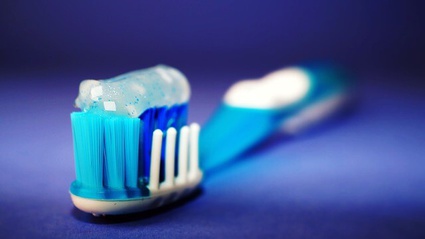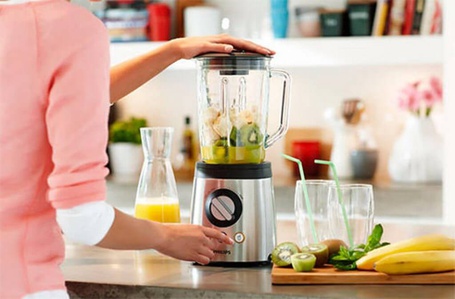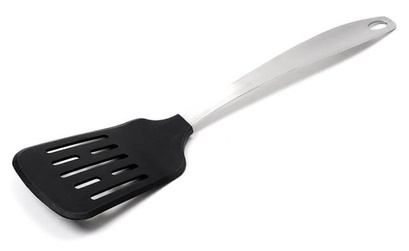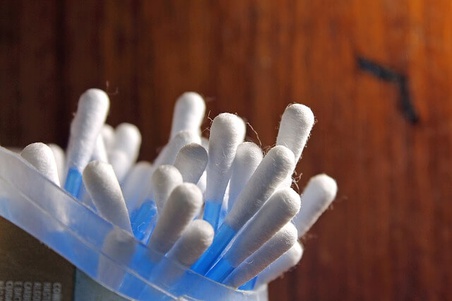Consumers are increasingly aware that household goods, ranging from cosmetics to food packaging to pillows, may contain hazardous chemicals. Less well known is the fact that seemingly healthy products can also turn out to be bad.
If you have one of these "healthy" and seemingly harmless products, think twice before using it!
The "healthy" products without which your household would be better off
-
Products that look healthy, but are not!
Hand washing is the first step in protecting yourself from infectious diseases and preventing their spread. But antibacterial soap is far from being the best solution!
Studies have shown that people who use antibacterial soaps and cleansers develop coughs, runny noses, sore throats, fevers, vomiting, diarrhea and other symptoms just as often as people who use regular soaps.
This is partly due to the fact that these symptoms are, most of the time, caused by viruses that cannot be killed by this type of product. But even for symptoms such as vomiting and diarrhea, which can be caused by bacteria, antibacterial soaps do not seem to offer any additional benefit to conventional soap.
In conclusion, antibacterial products are totally useless when it comes to getting rid of bacteria.
A 2007 study published in the journal Clinical Infectious Diseases found that antibacterial soap containing triclosan provided no additional benefit over basic soap.
With this type of soap, you are exposing yourself to triclosan, an antibacterial chemical that is linked to antibiotic resistance and endocrine disruption.
Some studies have shown that triclosan causes fetal bone deformities in mice and rats. Triclosan has also been implicated in breast cancer cells because it stimulates the growth and development of cancer cells.
-
Your chair

At the molecular level, your body was designed to be active all day. When you stop moving for long periods of time, such as sitting down, it's like telling your body to prepare for death.
Research published in the journal American College of Cardiology, found that women who sit for 10 or more hours during the day have significantly higher risks of heart disease than those who sit for 5 or fewer hours.
A study published in Diabetologia also showed that people who sat for long periods of time were twice as likely to have diabetes or heart disease as those who were more active. Sitting for more than eight hours a day has also been associated with an increased risk of type 2 diabetes.
Excessive sitting increases the risk of colon, breast and cervical cancer, and the more hours you spend sitting in a day, the shorter your life expectancy. One study found, for example, that if you decrease the amount of time you spend sitting to less than three hours a day, you could increase your life expectancy by two years!
The evidence is overwhelming: more than 10,000 studies show that prolonged sitting reduces your life expectancy by promoting dozens of chronic diseases, even if you work out regularly. It is therefore essential to get up as much as possible.
It is recommended that you take at least 10,000 steps a day while walking, in addition to regular higher intensity exercise.
The "healthy" products without which your household would be better off
-
Whitening or antibacterial toothpastes
Whitening toothpastes can be harsh on your enamel and make your teeth and gums more sensitive. Antibacterial toothpastes, such as Colgate, usually contain the famous triclosan, which we mentioned above.
In addition, many big box toothpastes are composed of toxic ingredients such as sodium lauryl sulfate (SLS), artificial sweeteners, fluoride, propylene glycol and microbeads. The latter are environmentally hazardous and are found blocked under the gums of patients. This feeds and provides an entrance for bacteria, which could cause gum disease.

-
The loofah
A loofah is an ideal environment for bacteria, fungus and mold to grow, especially when kept in the warm, moist atmosphere of your bathroom or shower. Because it is used directly on the skin, it is possible that small wounds (including tiny shaving nicks) can become infected, leading to impetigo, folliculitis or other skin problems. If you like to use loofah, choose it made of natural fibers that contain enzymes that inhibit microbial growth and be sure to replace it every month. After each use, wring it out, let it dry completely and store it in a cool, dry place.
-
Blenders
The blenders are great for making your morning smoothies ... but if you don't wash them properly, they will become problematic. The seal (the rubber ring that holds the blender blade in place) is the third most infested place in the kitchen and research has shown that it can harbor germs of all kinds (salmonella, E. coli, yeast and mold). The solution is simple: when you're done using your blender, take it apart completely and wash every part, including the seal!

-
Manicure tools
Pumice stones, cuticle cutters and other nail tools harbor bacteria on your skin. If you don't clean them, they could cause skin infections, especially if you share these utensils with other family members. They should be washed with soap and water after each use and the pumice stones should be replaced every three to four weeks.
-
Rubber spatulas
The rubber spatulas are like blender gaskets and come in second place as the most infested kitchen items. The problem is that most people do not remove the spatula head from the handle when cleaning, which allows E. coli, yeast and mold to grow. If your spatula comes loose, always remove the head and wash each piece separately. Otherwise, it is necessary to pay special attention to the joint between the head and the handle, when washing.

-
The plushies
Stuffed animals are known to be a nest for dust mites which are the major cause of indoor dust allergy. If you are allergic, this can lead to sneezing, runny nose, itchy eyes and other symptoms. If your child can't do without his puppies, you should be sure to keep the number down to no more than one or two on the bed and store the rest on a shelf. You can also put stuffed animals in a plastic bag and leave them in the freezer overnight; the cold will kill the mites.
The "healthy" products without which your household would be better off
-
Cotton swabs
Your ears should contain a good amount of earwax, which is one of your body's self-cleaners. The excess should come out of your ear canal automatically.
Wax removal is aided by your jaw movements (talking, chewing, etc.), and once it reaches your outer ear, it simply falls out or is removed in your shower or bath.
According to the American Academy of Otolaryngology - Head and Neck Surgery Foundation (AAO-HNSF), under ideal circumstances your ear canals should never be cleaned, especially with swabs. They state:
"Unfortunately, many people mistakenly believe that earwax should be routinely removed
for personal hygiene. Attempting to remove earwax with swabs or any other object can lead to ear damage,
trauma, earwax plugs, and even temporary deafness. These objects only push the wax deeper,
which can clog the ear canal entirely."

Normally, earwax is produced only in the outer third of your ear canal. One of the main risks of cotton swabs is that they can push earwax into the deep part of the canal, near the eardrum. As the AAO-HNSF points out:
"When a patient has an eardrum blocked with earwax, it is, most of the time, because he or she has used swabs,
hairpins or bent napkin corners. These objects only push the earwax in deeper. "
When earwax is pushed into a part of the ear where it shouldn't be, it can carry fungi, bacteria and viruses from the outer ear into the inner ear, which obviously increases the risk of infection. It can also block your ear canal, which can lead to hearing loss or rupture of the eardrum.
It's a vicious cycle, because the more you rub your ears with cotton swabs, the more histamine will be released, which will make the skin irritated and inflamed. This reaction will probably make you want to insert a cotton swab into your ear again, leading to further dryness and irritation.
-
Humidifiers
During the winter months, radiators and cold temperatures can lead to overly dry air, resulting in dry skin, sinus and throat irritation, and itchy eyes. Over time, low humidity can even dry out and inflame the mucous membrane that lines the airways. When this natural barrier no longer works properly, it increases your risk of colds, flu and other infections.
You may be tempted to add moisture to your home by using a humidifier and this is a reasonable solution as long as it doesn't backfire. You have to be very careful to make sure that the humidity level is not too high, which could be bad because of the mold caused by too much humidity.
This is because the moist, warm air in a humidifier is a breeding ground for bacteria and fungi that travel out of the unit in a "toxic fog" that you breathe.
Research has shown that breathing air from humidifiers can lead to lung problems and infection and that humidifier use is associated with an increased risk of asthma development in children. So, if you choose to use a humidifier, do so sparingly to ensure you have the correct humidity level. Hygrometers, available at most hardware stores, measure the amount of moisture in the air in your home so you can adjust your humidifier accordingly. Some humidifiers even have a built-in hygrometer.
According to Dr. Robert Ivker, former president of the American Holistic Medical Association, the ideal level of humidity for sinus health is between 35 and 45 percent. This level is also generally recommended to prevent mold in your home. A humidifier should be cleaned every three days with hydrogen peroxide to remove deposits.
The water in the tank should be changed daily and the surrounding areas (tables, windows, carpets, curtains, etc.) should be kept dry. If you have central heating, the best humidifier is one that is built directly onto your system and pumps water into it so that the entire process is automated and your home is evenly humidified.



